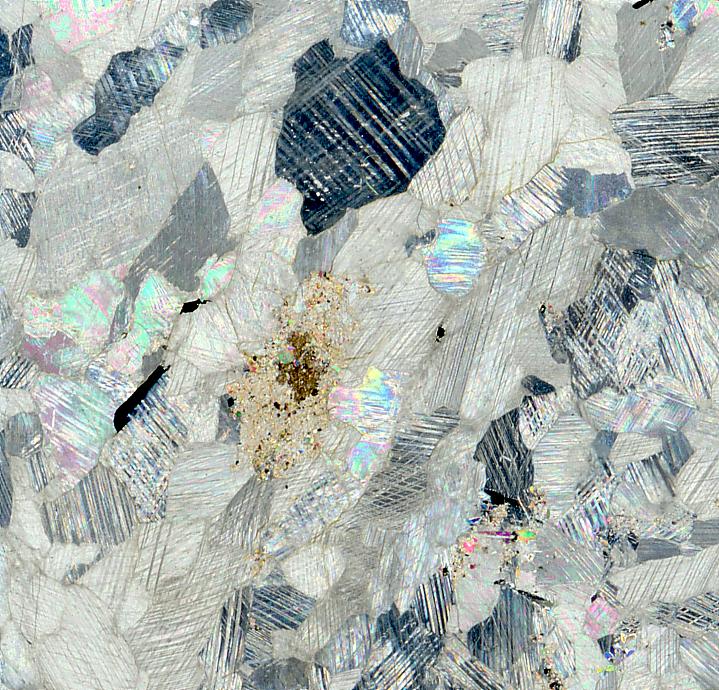|

A (ppl) The
orange-brown shape in the centre consists of a cluster of minute
crystals of phlogopite, a silicate mineral belonging to the mica
group and characteristic of this type of carbonatite known as SÖVITE. |

C (xpl) Under crossed
polars, the high order interference colours (birefringence), perfect
rhombhedral cleavage can be seen as well as twinning in some crystals. |
|

B Hand specimen
The Loch Borralan intrusion, a Lower Palaeozoic
plutonic complex in the SW corner of the Assynt region is of
international importance for petrological reasons. Among several
important exposures, the site includes the only British example of
carbonatite, an igneous rock consisting almost entirely of carbonate
as can be seen in thin section photo's A (ppl) and C (xpl).
The hand specimen was donated by Brian Young and the
map indicates the locality where it was collected. 376 refers to the
web editor's catalogue number.
Back to thumbnails.
|

Created with Memory-Map. ©Crown Copyright. Licence number
100034184. www.memory-map.co.uk
Carbonatites are rare, peculiar igneous rocks formed
by unusual processes and from unusual source rocks. Three models of
their formation exist:
1.direct generation by very low degree partial melts
in the mantle and melt differentiation
2.liquid immiscibility between a carbonate melt and a
silicate melt
3.peculiar, extreme crystal fractionation
Evidence for each process exists, but the key is that
these are unusual phenomena. Historically, carbonatites were thought
to form by melting of limestone or marble by intrusion of magma but
geochemical and mineralogical data discount this.
|